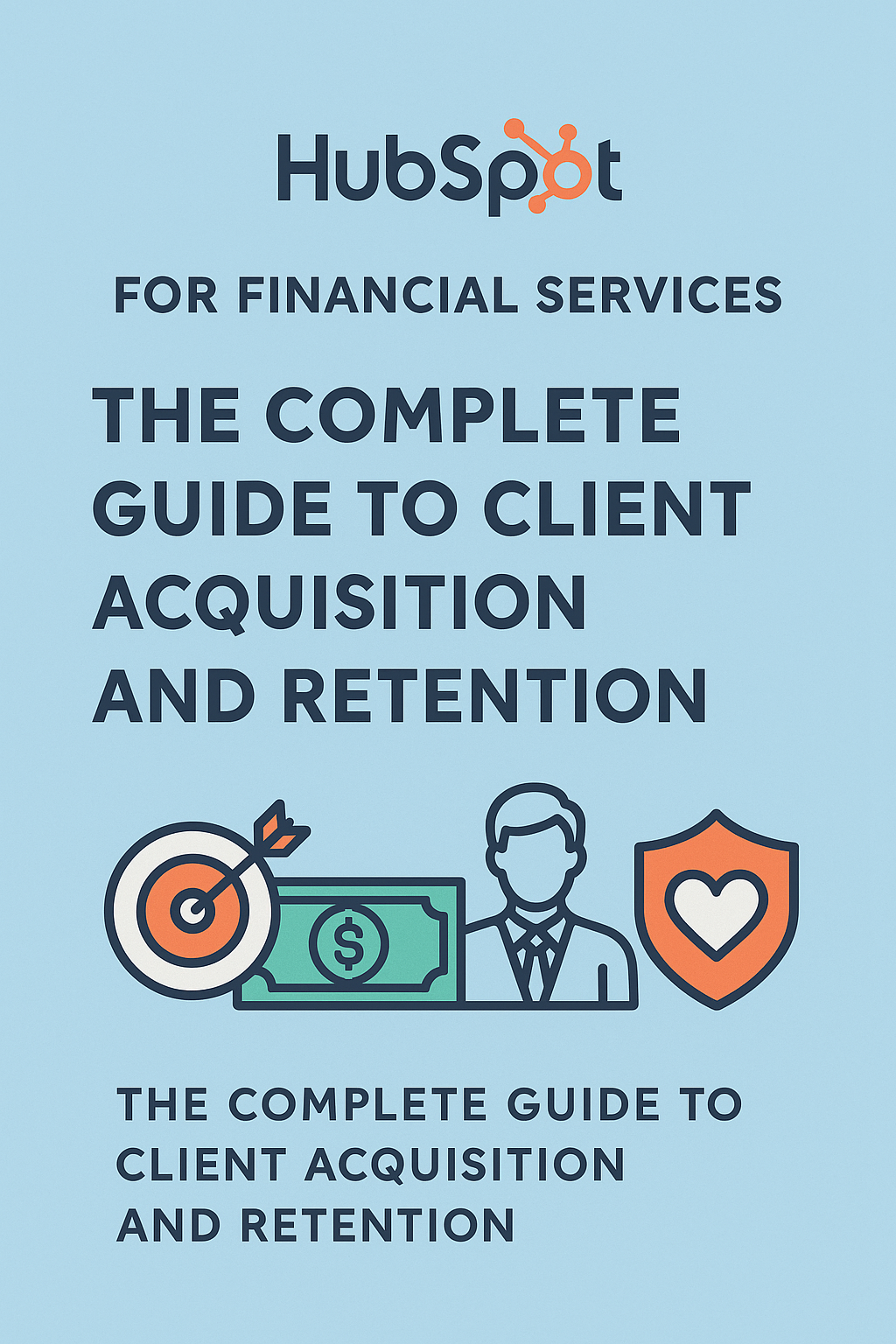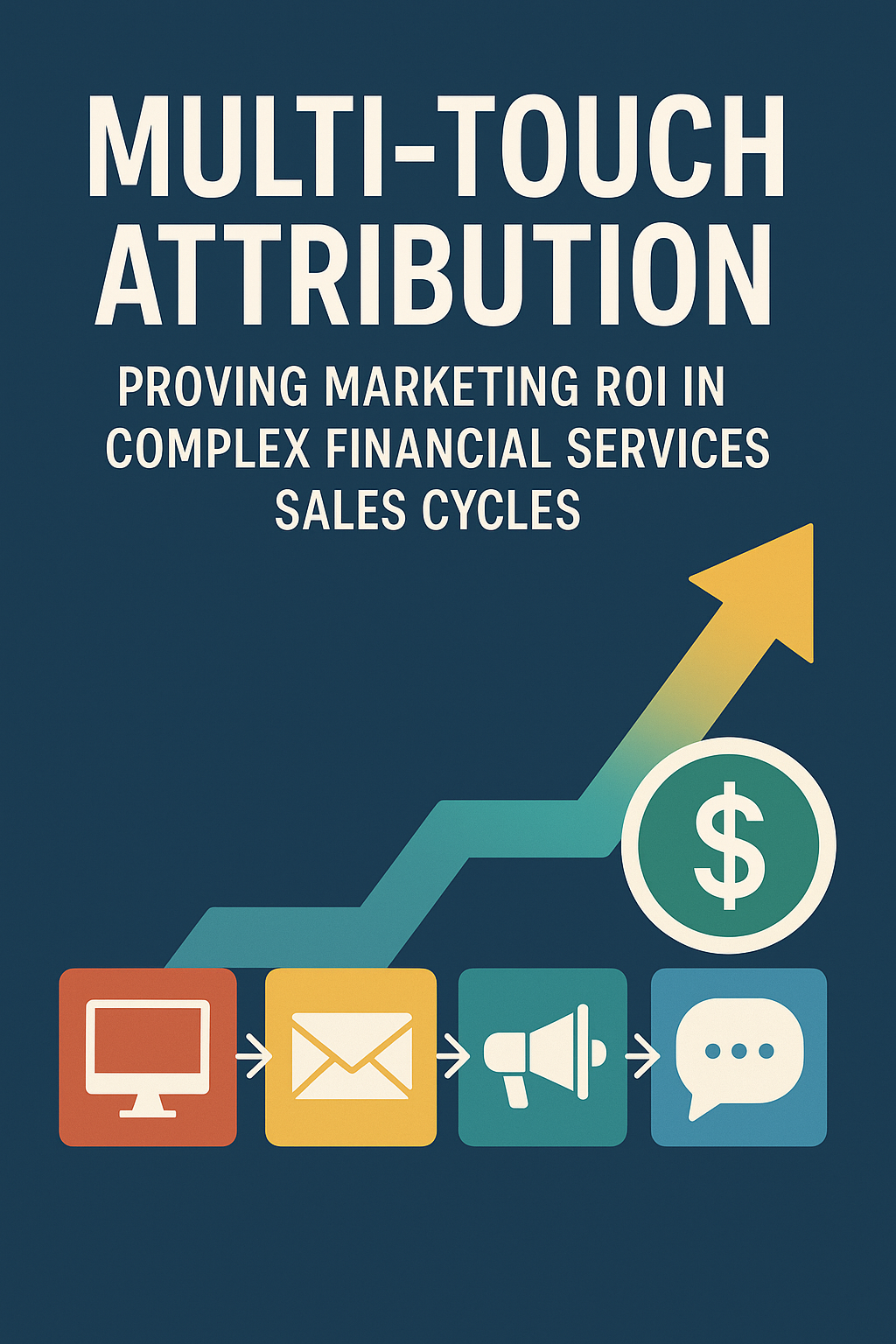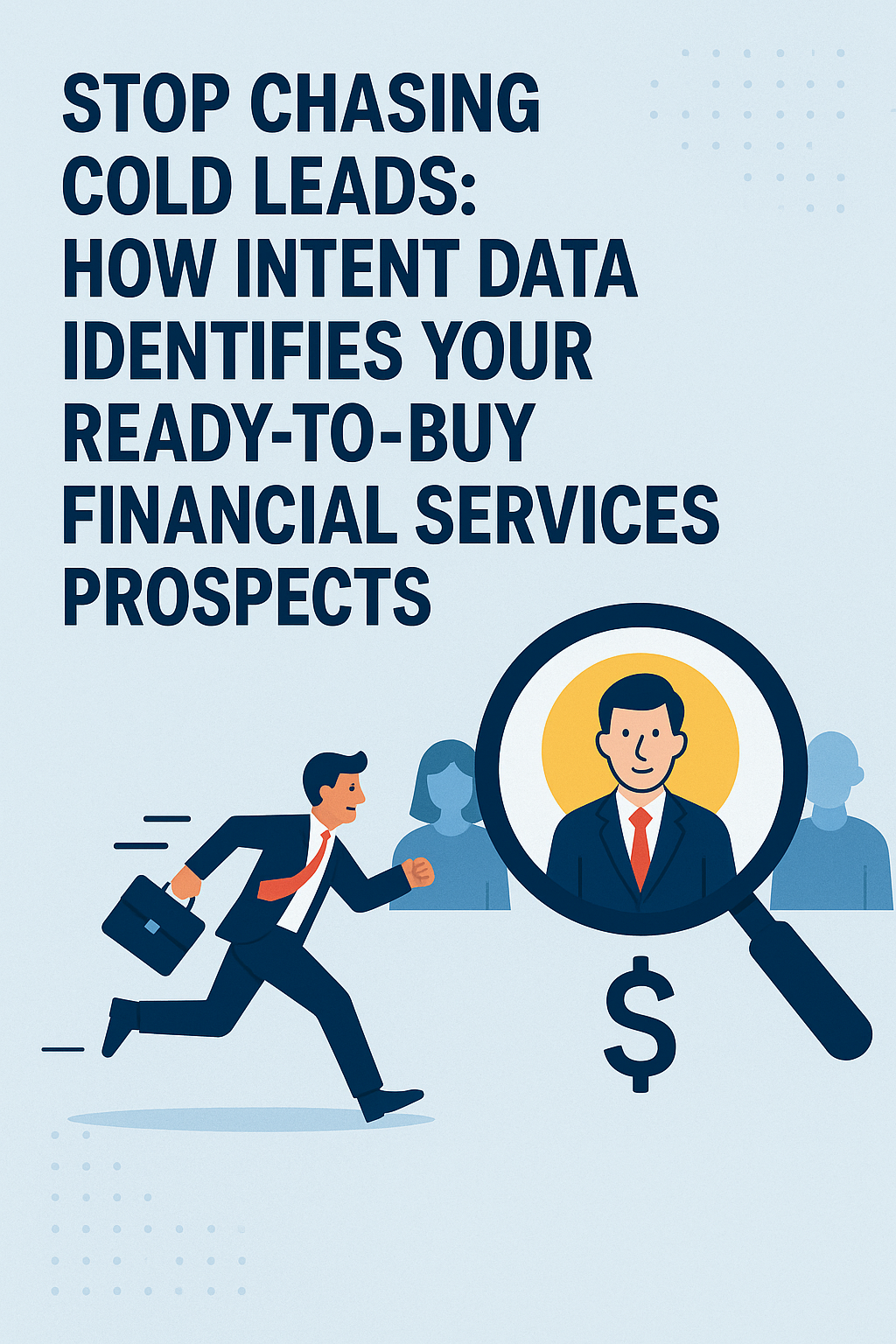
HubSpot for Financial Services | Complete CRM Guide 2025
The decision to integrate HubSpot and Salesforce represents a significant investment in your financial services firm's technology infrastructure. While both platforms offer native integration capabilities, the complexity of financial services operations—combined with stringent regulatory requirements—makes partnering with a specialized integration expert not just beneficial, but essential.
The financial services industry is undergoing a digital transformation. Today's clients expect personalized experiences, rapid responses, and seamless omnichannel engagement—expectations that traditional CRM systems struggle to meet. HubSpot for financial services offers a comprehensive solution that combines marketing automation, sales enablement, and customer service tools while addressing the unique compliance and security requirements of the industry.
The financial services industry is undergoing a digital transformation. Today's clients expect personalized experiences, rapid responses, and seamless omnichannel engagement—expectations that traditional CRM systems struggle to meet. HubSpot for financial services offers a comprehensive solution that combines marketing automation, sales enablement, and customer service tools while addressing the unique compliance and security requirements of the industry.
According to HubSpot's financial services data, firms implementing the platform experience dramatic growth: 346% more inbound leads, 98% more deals closed, and 245% more website traffic within 12 months. These aren't isolated success stories—they represent the transformative potential of a properly implemented, compliance-focused CRM strategy.
Why Are Financial Services Firms Choosing HubSpot?
Financial institutions ranging from solo financial advisors to multi-branch banks are adopting HubSpot for compelling reasons:
Unified Platform for Marketing, Sales, and Service
Unlike fragmented technology stacks requiring multiple vendors and integrations, HubSpot provides a unified platform where marketing campaigns, sales activities, and customer service interactions share a single database. This unified approach eliminates data silos, improves collaboration, and provides comprehensive visibility into the client journey.
For financial services firms, this means:
- Marketing can nurture prospects with compliant, personalized content
- Sales teams access complete prospect engagement history
- Service representatives see every client interaction and transaction
- Leadership gains unified reporting across all revenue-generating activities
Built-In Compliance Features
Financial services firms operate under strict regulatory oversight from FINRA, SEC, GDPR, and other governing bodies. HubSpot addresses these requirements through:
Comprehensive Audit Trails
Every client interaction—emails sent, forms submitted, calls logged, meetings scheduled—is automatically recorded with timestamps and user attribution. This creates the documentation trail required for regulatory audits and compliance reviews.
Role-Based Permissions and Access Controls
HubSpot's enterprise security features enable granular control over who can access sensitive client data, edit records, or execute specific workflows. This ensures compliance with data protection regulations and internal security policies.
GDPR and Data Privacy Tools
Built-in features support GDPR compliance including cookie consent management, data processing addendums, automated data deletion workflows, and detailed privacy settings. Financial firms can demonstrate regulatory compliance while respecting client privacy preferences.
Intuitive User Experience Driving Adoption
A survey by the Financial Advisor's Association of Canada found that 67% of advisors lack awareness of CRM capabilities—often because systems are too complex to use effectively. HubSpot's user-friendly interface addresses this challenge:
- Minimal training required for basic functionality
- Mobile apps enabling access anywhere
- Chrome extensions for email tracking and logging
- Automated data entry reducing manual work
Higher user adoption translates directly to better data quality, more consistent processes, and stronger client relationships.
Scalability from Solo Practitioners to Enterprise Firms
HubSpot scales alongside your business:
Free CRM for Small Firms
Solo advisors and small teams can start with HubSpot's Free CRM, accessing contact management, deal tracking, and basic email tools without cost. This eliminates financial barriers to CRM adoption.
Professional Tier for Growing Firms
As firms grow, Professional tiers ($800-$3,200/month depending on hubs) add marketing automation, sales sequences, reporting dashboards, and workflow automation—capabilities essential for scaling client acquisition.
Enterprise for Large Organizations
Enterprise tiers ($3,600-$5,000/month per hub) provide advanced permissions, predictive lead scoring, custom objects, and hierarchical teams—supporting complex organizational structures and sophisticated processes.
What Are the Essential HubSpot Features for Financial Services?
Understanding platform capabilities helps financial services firms maximize their investment:
Marketing Hub: Client Acquisition at Scale
Financial services firms face unique marketing challenges: complex products, long sales cycles, and strict compliance requirements. Marketing Hub addresses these with:
Lead Generation Tools
- Landing pages and forms: GDPR-compliant lead capture with progressive profiling
- Content management system: Publish educational content demonstrating expertise
- Blog platform: Establish thought leadership and improve SEO rankings
- SEO recommendations: Optimize content for organic search visibility
According to industry data, organic search drives 64% of calls to financial services providers. HubSpot's SEO tools ensure your firm captures this high-intent traffic.
Email Marketing and Automation
- Personalized email campaigns: Segment audiences by demographics, behaviors, and interests
- Automated nurture workflows: Educate prospects over time with relevant content
- A/B testing: Optimize subject lines, content, and calls-to-action
- Compliance features: Ensure CAN-SPAM and regulatory compliance
Financial services firms using marketing automation see a 451% increase in qualified leads, according to HubSpot research.
Social Media Management
- Publishing and scheduling: Maintain consistent social presence across platforms
- Social monitoring: Track mentions and engagement
- Lead generation from social: Capture leads directly from LinkedIn, Facebook, and Twitter
- Performance analytics: Measure social ROI and optimize strategy
Marketing Analytics and Attribution
- Campaign performance dashboards: Visualize marketing ROI
- Multi-touch attribution: Understand which touchpoints drive conversions
- Traffic analytics: Track website visitors and engagement
- Custom reporting: Create reports for specific metrics and stakeholders
Sales Hub: Pipeline Visibility and Acceleration
Sales Hub transforms how financial services professionals manage prospects and clients:
Contact and Company Management
- Unified contact database: Centralize all prospect and client information
- Company insights: Automatic enrichment with firmographic data
- Activity timeline: Complete history of interactions and engagements
- Custom properties: Track financial services-specific data (AUM, portfolio type, risk tolerance)
Deal Pipeline Management
- Customizable pipelines: Design stages matching your sales process
- Deal tracking: Monitor progress and identify bottlenecks
- Forecasting: Predict revenue based on pipeline velocity
- Pipeline analytics: Understand conversion rates and cycle times
Research shows that 91% of businesses with 11+ employees use CRM systems, with high-performing sales teams 3.2 times more likely to leverage CRM effectively. Deal pipeline visibility is foundational to this success.
Sales Automation and Sequences
- Email sequences: Automate follow-up for consistent prospect engagement
- Task automation: Create reminder tasks based on triggers
- Meeting scheduling: Eliminate scheduling friction with embedded calendars
- Document tracking: See when prospects view proposals and documents
Calling and Email Integration
- Built-in calling: Make and log calls directly from HubSpot
- Email integration: Sync Gmail or Outlook for automatic logging
- Email templates: Save and share compliant email templates
- Email tracking: Know when prospects open emails and click links
Service Hub: Client Retention and Satisfaction
Client retention is critical in financial services—acquiring new clients costs 5-25 times more than retaining existing ones. Service Hub strengthens client relationships through:
Ticketing System
- Support ticket management: Track and resolve client issues efficiently
- Ticket automation: Route tickets to appropriate team members
- SLA management: Ensure timely responses and resolution
- Customer portal: Allow clients to submit and track requests
Knowledge Base
- Self-service resources: Publish FAQs, guides, and educational content
- Search functionality: Help clients find answers quickly
- Access controls: Provide member-only content for existing clients
- Analytics: Understand which topics require attention
Financial services firms using knowledge bases report 37% better ticket closure rates and improved client satisfaction scores.
Client Feedback and Surveys
- NPS surveys: Measure client satisfaction and loyalty
- Custom surveys: Gather feedback on specific services or experiences
- Automated feedback requests: Trigger surveys after key interactions
- Sentiment analysis: Track satisfaction trends over time
Live Chat and Chatbots
- Website chat: Enable real-time conversations with prospects
- Chatbots: Qualify leads and answer common questions automatically
- Conversation routing: Direct inquiries to appropriate team members
- Chat analytics: Monitor response times and satisfaction
How Do Financial Services Firms Use HubSpot for Lead Generation?
Effective lead generation strategies leverage HubSpot's capabilities systematically:
Content Marketing and Thought Leadership
Position your firm as a trusted advisor through educational content:
Educational Resources
- Retirement planning guides
- Investment strategy whitepapers
- Tax optimization checklists
- Market commentary and analysis
- Financial planning calculators
Content Distribution Strategy
- Publish content to HubSpot-hosted blog
- Optimize for SEO to capture organic search traffic
- Promote through email campaigns to existing contacts
- Share via social media to expand reach
- Use as lead magnets behind landing page forms
Research indicates that 73% of financial services marketers prioritize customer experience, with 72% of customers rating personalization as highly important. Educational content demonstrates expertise while building trust.
Lead Magnets and Conversion Optimization
Convert website visitors into leads through compelling offers:
High-Value Lead Magnets
- Retirement readiness calculator
- Portfolio risk assessment
- Financial planning checklist
- Industry trend reports
- Webinar registrations
Conversion Best Practices
- Create dedicated landing pages for each offer
- Minimize form fields (progressive profiling over time)
- Include clear value propositions
- Use social proof (testimonials, certifications)
- Implement mobile-responsive designs
- A/B test headlines, images, and calls-to-action
Financial services firms see conversion rate improvements of 15-40% through systematic testing and optimization.
Lead Scoring and Qualification
Not all leads are created equal. HubSpot's lead scoring helps prioritize:
Scoring Criteria
- Demographic fit: Age, location, income level, employment
- Firmographic fit (B2B): Company size, industry, revenue
- Behavioral engagement: Website visits, content downloads, email opens
- Explicit interest: Form submissions, meeting requests, demo requests
Qualification Workflows
- Automatically assign scores based on actions and attributes
- Trigger notifications when leads reach threshold scores
- Route hot leads directly to sales representatives
- Nurture lower-scoring leads with additional content
- Remove disqualified leads from active follow-up
High-performing teams using lead scoring see 77% higher lead generation ROI compared to those without scoring systems.
Multi-Channel Campaign Orchestration
Reach prospects where they are through coordinated campaigns:
Integrated Campaign Example: Retirement Planning Seminar
- Email invitation: Send to contacts aged 55-70 in target geography
- Social promotion: Advertise on LinkedIn and Facebook
- Landing page: Capture registrations with simple form
- Reminder sequence: Automated emails leading up to event
- Follow-up workflow: Post-event content and consultation offers
- Sales notification: Alert advisors to high-engagement attendees
This integrated approach leverages HubSpot's unified platform for coordinated, compliant, measurable campaigns.
What Are the Best Practices for HubSpot Implementation in Financial Services?
Successful implementations follow proven patterns:
1. Start with Clear Business Objectives
Define specific, measurable goals before implementation:
- Increase inbound leads by 50% in 12 months
- Reduce sales cycle length by 20%
- Improve client retention rate by 10%
- Increase marketing-sourced revenue by 30%
- Achieve 80% user adoption within 90 days
Clear objectives guide configuration decisions and enable ROI measurement.
2. Ensure Compliance from Day One
Build regulatory requirements into initial setup:
Compliance Checklist
- Configure role-based permissions aligned with access policies
- Implement email opt-in/opt-out workflows meeting CAN-SPAM requirements
- Create compliant email templates with required disclosures
- Establish data retention and deletion policies
- Document data processing procedures for GDPR compliance
- Train team on compliant communication practices
According to FINRA data, the organization reviewed 75,125 advertisements in 2024, resulting in 730 disciplinary actions. Proactive compliance prevents costly violations.
3. Migrate and Clean Data Strategically
Poor data quality undermines CRM effectiveness:
Data Migration Best Practices
- Audit existing data for completeness and accuracy
- Deduplicate records before migration
- Standardize formats (phone numbers, addresses, company names)
- Map custom fields to HubSpot properties
- Migrate in phases (test with small batch first)
- Validate data post-migration
- Establish ongoing data quality processes
Clean data enables accurate reporting, effective automation, and confident decision-making.
4. Customize for Financial Services Workflows
Configure HubSpot to match your business processes:
Custom Properties for Financial Services
- Assets under management (AUM)
- Investment products of interest
- Risk tolerance level
- Current financial institution
- Planning goals (retirement, education, estate)
- Life stage (accumulation, preservation, distribution)
- Regulatory classification (accredited investor status)
Custom Deal Stages
- Initial inquiry
- Discovery meeting scheduled
- Fact-finding completed
- Proposal presented
- Compliance review
- Agreement signed
- Client onboarded
5. Invest in Training and Change Management
Technology alone doesn't drive results—adoption does:
Training Program Components
- Role-specific training for marketers, sales reps, service staff
- Hands-on exercises with real scenarios
- Quick reference guides and video tutorials
- Regular refresher sessions on new features
- Champions program (power users supporting peers)
- Ongoing support channel (Slack, email, office hours)
Research shows that 59% of financial advisors cite time constraints as barriers to CRM use. Effective training overcomes this obstacle by demonstrating immediate value and efficiency gains.
6. Integrate with Existing Systems
Financial services firms operate multiple specialized systems:
Common Integration Points
- Salesforce: Bidirectional sync of contacts, deals, activities
- Financial planning software: eMoney, MoneyGuidePro, RightCapital
- Portfolio management: Orion, Tamarac, Black Diamond
- Custodians: Schwab, Fidelity, TD Ameritrade
- Document management: Laserfiche, SharePoint, DocuSign
- Compliance: Smarsh, Global Relay, Redtail
HubSpot offers 1,000+ native integrations and robust API for custom connections.
7. Measure, Analyze, and Optimize Continuously
Implementation is just the beginning—optimization drives results:
Key Performance Indicators
- Marketing: Traffic, conversion rates, lead volume, cost per lead
- Sales: Pipeline value, conversion rates, sales cycle length, win rates
- Service: Ticket resolution time, customer satisfaction, retention rates
- Overall: Revenue, customer lifetime value, ROI
Optimization Cycle
- Review KPIs monthly
- Identify underperforming areas
- Form hypotheses for improvement
- Implement changes
- Measure results
- Scale successes, learn from failures
Firms committed to continuous optimization see 30-50% improvement in results year-over-year.
How Does HubSpot Compare to Traditional Financial Services CRM Systems?
Financial services firms often evaluate HubSpot against incumbent systems:
HubSpot Advantages
Integrated Marketing Automation
Traditional CRMs focus on sales and service. HubSpot unifies marketing, sales, and service in one platform—critical for modern buyer journeys where prospects research extensively before contacting firms.
User Experience and Adoption
Legacy systems often have steep learning curves and clunky interfaces. HubSpot's modern, intuitive design drives higher adoption rates—the foundation for CRM success.
Rapid Implementation
Traditional enterprise CRM implementations take 6-18 months. HubSpot deployments typically complete in 8-16 weeks, accelerating time-to-value.
Transparent, Predictable Pricing
Many legacy CRMs have complex pricing structures with add-on costs for features. HubSpot offers clear, transparent pricing based on tier and contact volume.
Continuous Innovation
HubSpot releases new features quarterly. Recent additions include Breeze Intelligence for data enrichment and AI-powered content generation—capabilities that legacy systems take years to match.
Considerations for Large Enterprises
While HubSpot serves firms of all sizes, very large enterprises (1,000+ users) should evaluate:
- Complex organizational hierarchies and permissions
- Extensive customization requirements
- Integration with legacy enterprise systems
- Regulatory requirements for on-premise deployment
In these cases, platforms like Salesforce Financial Services Cloud may be more appropriate, or a HubSpot-Salesforce integration combining strengths of both systems.
Frequently Asked Questions About HubSpot for Financial Services
Is HubSpot compliant with FINRA and SEC regulations?
HubSpot provides features that support compliance with FINRA, SEC, and other financial regulations, including comprehensive audit trails, role-based permissions, and data retention capabilities. However, compliance is ultimately the responsibility of the firm using the platform. Financial institutions should work with compliance officers and specialized implementation partners to configure HubSpot according to their specific regulatory requirements.
Can solo financial advisors afford HubSpot?
Yes. HubSpot offers a Free CRM that provides essential contact management, deal tracking, and email tools without cost. Solo advisors can start free and upgrade to paid tiers ($45-$800/month for single users) as their practice grows and they need advanced features like marketing automation and custom reporting.
How long does it take to implement HubSpot for a financial services firm?
Implementation timelines vary by firm size and complexity. Solo advisors can be operational in 1-2 weeks. Small firms (5-20 users) typically implement in 4-8 weeks. Larger organizations (50+ users) with complex requirements and integrations usually need 12-16 weeks for comprehensive deployment including training and change management.
Does HubSpot integrate with financial planning software?
Yes. HubSpot integrates with major financial planning platforms including eMoney, MoneyGuidePro, and RightCapital, as well as portfolio management systems like Orion and Tamarac. These integrations enable data synchronization and workflow automation between systems. Integration complexity varies—work with a certified partner for seamless implementation.
Can HubSpot replace our current CRM system?
Possibly. Many financial services firms successfully migrate from legacy CRMs like Redtail, Wealthbox, or Junxure to HubSpot. Evaluation factors include feature requirements, integration needs, data migration complexity, and budget. Consider running a pilot program with a small team before committing to full migration.
What kind of results can financial services firms expect from HubSpot?
According to HubSpot's financial services data, firms implementing the platform experience 346% more inbound leads, 98% more deals closed, and 245% more website traffic within 12 months. Individual results vary based on implementation quality, strategy, and execution—but firms committed to leveraging the platform's capabilities consistently see significant improvements in client acquisition and retention metrics.
Call to Action
Ready to transform your financial services firm with HubSpot? Our certified HubSpot specialists help banks, wealth managers, and financial advisors implement compliant, high-performing CRM strategies that drive measurable growth. Contact us today for a consultation and receive a customized HubSpot roadmap tailored to your firm's unique needs and regulatory requirements.
About the Author
David Cockrum is the founder of Vantage Point and a former COO in the financial services industry. Having navigated complex CRM transformations from both operational and technology perspectives, David brings unique insights into the decision-making, stakeholder management, and execution challenges that financial services firms face during migration.
-
-
- Email: david@vantagepoint.io
- Phone: (469) 652-7923
- Website: vantagepoint.io
-




